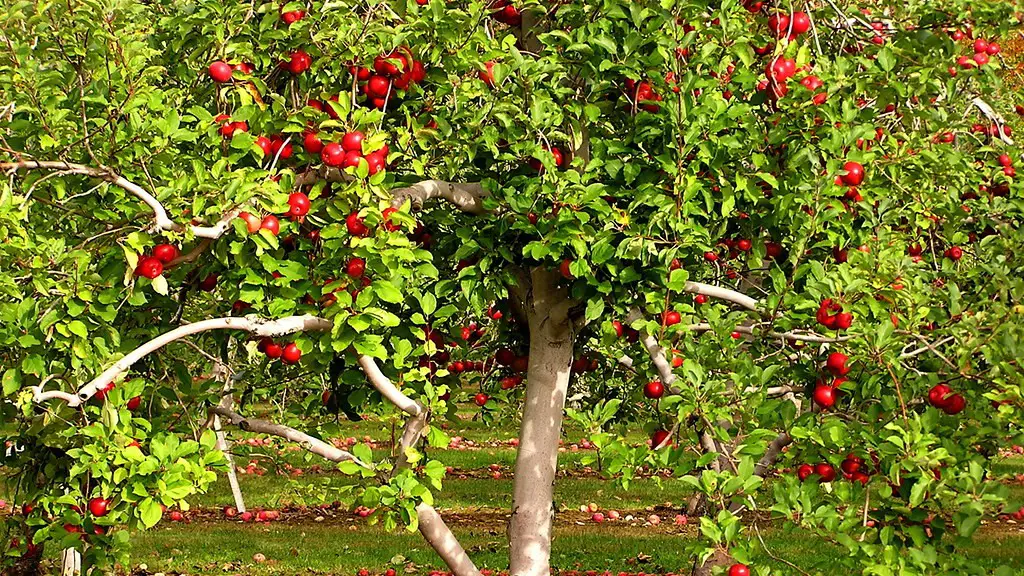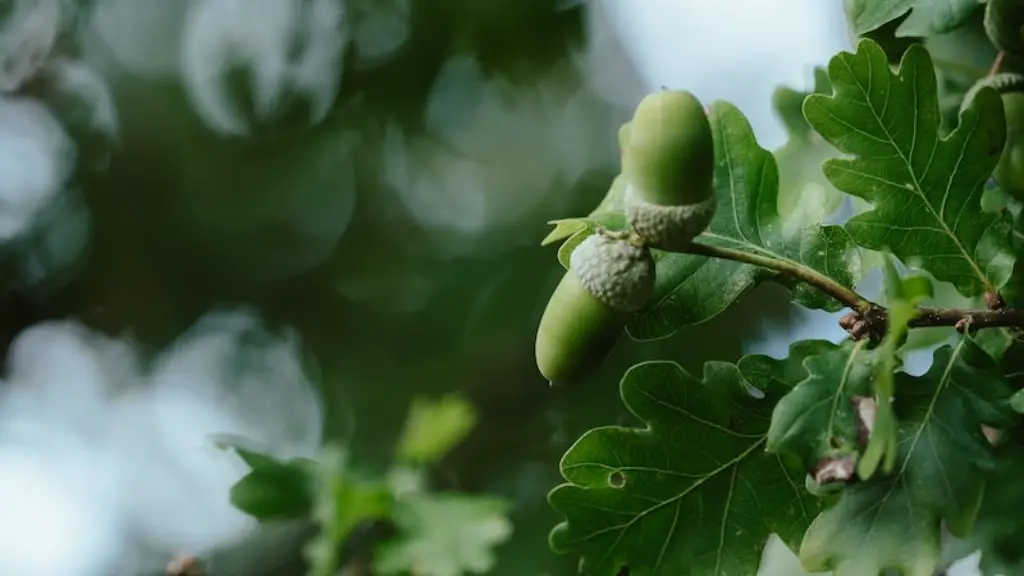A dwarf apple tree needs regular pruning to help it produce the most fruit and maintain its desired size. Pruning helps promote the tree’s natural growth, maintain its shape and keep it healthy. While pruning may seem intimidating, if you follow these steps you can easily get it done with confidence.
Start by removing any branches that are crossing each other, broken, diseased or dead. Then, shape the tree by removing lower branches, until you reach your desired height. You also need to prune side branches from the main trunk to promote light and air circulation, and allow for better support for the weight of the fruit. Cut away branches that are growing downwards, as well as any suckers that may be growing from the trunk or around the base.
When you’re ready to do the actual pruning, you’ll need two tools: loppers and a pruning saw. Start with the loppers to make cleaner cuts and shorter cuts, and use the pruning saw for thick, sturdy branches. Before cutting, try to identify the main branches that are necessary to maintain the shape of the tree and also to look for signs of disease, like discoloration or holes.
Once you’ve identified the branches that should stay and those that should go, it’s time to cut. Cut the branches back to their base or select buds. These buds are the points from which new branches will grow and should be facing outward and away from the center of the tree. As you work, make sure the cuts are neat and clean and the ends don’t overlap each other.
When pruning, keep in mind that the best time for pruning is in the dormant season, which is late winter or early spring. This is when the tree is most still and least vulnerable to infection. After you’ve completed the pruning, don’t forget to identify and remove any branches or buds that may be diseased.
If you follow these steps, your dwarf apple tree should remain healthy and produce sweet and nutritious fruit for many years to come.
What Parameters Should I Consider When Pruning?
When it comes to pruning, it’s important to consider the shape and size of the tree. Look for branches that may be crossing each other, or branches that are too thick to support the weight of the fruit. Remove any branches that are growing too close together as well, which can hinder light and air circulation. Prune back lower branches to reach the desired height and shape of the tree. Keeping these factors in mind will help ensure that your tree is healthy, produces more fruit and looks aesthetically pleasing.
What Type Of Tools Do I Need For Pruning?
For pruning your dwarf apple tree, you’ll need two basic tools: loppers and a pruning saw. Loppers are for shorter cuts, while a pruning saw works best for larger, thicker branches. Make sure the blades of your tools are sharp and free from rust. This will make the cuts easier and cleaner and help protect the tree from infection.
When Is The Best Time To Prune My Tree?
Although you can prune your tree throughout the growing season, the best time for pruning is during its dormant season, which is typically in late winter or early spring. During this time, the tree is still and less vulnerable to infection. Pruning during this time of the year helps maintain the health of the tree while still maintaining shape and size.
What Are Some Recommended Pruning Techniques?
When pruning your tree, look for the signs of disease such as discoloration or holes in the branches. When you’ve identified the branches that need to stay and those that need to go, use the appropriate tool, either the loppers or pruning saw. Finally, make sure that each cut is neat and clean, and remove any diseased branches or buds that you find.
How Do I Know That I Have Successfully Pruned My Tree?
If you follow the above pruning techniques, you can be confident that your dwarf apple tree is healthy and well cared for. Make sure that no branches are overlapping, and that the the trunk is adequately shaded and the tree is the desired shape and size. You should also watch for any signs of disease and remove any diseased branches or buds. With regular pruning, your tree should remain healthy and produce delicious fruits.


